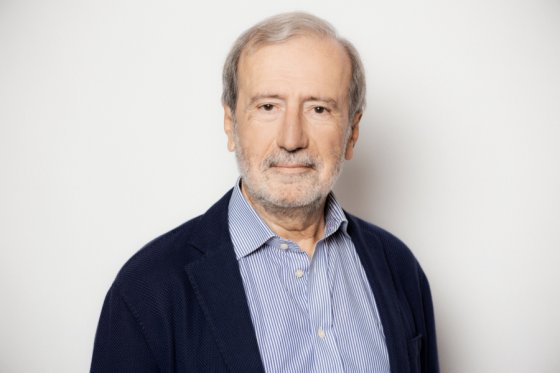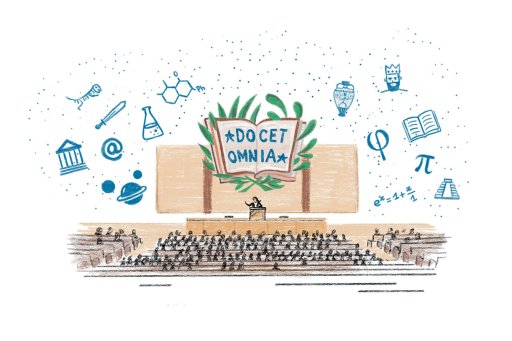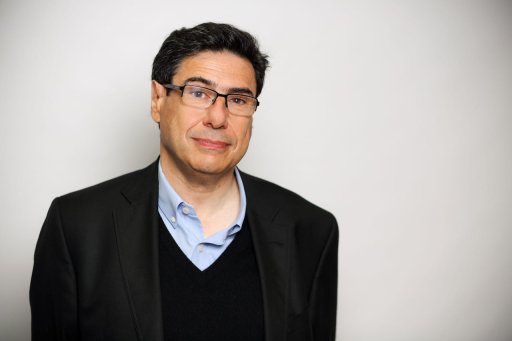Interview with Luigi Rizzi

Luigi Rizzi is a linguist. His work focuses on the invariance and variation of natural languages, the mapping of syntactic structures, and the mechanisms of language acquisition. Since 2020, Luigi Rizzi has held theGeneral Linguistics Chair at the Collège de France.
What can we learn from research into the mechanisms of language acquisition, particularly in young children?
Luigi Rizzi : From birth, babies face their first obstacle : they don't know the words that adults pronounce. They can only distinguish the sounds of spoken language from the sounds of their immediate environment. During the first year of life, his linguistic production is very limited. He begins to babble at around six months, pronouncing sequences of sounds such as " baba ", " dada ", etc. He then begins to say isolated words, but very few, such as " maman " or " papa " towards the end of the first year.
From the age of two onwards, his knowledge explodes. If you've ever watched a two-year-old , you'll notice that in just a few months he or she makes incredible progress in language acquisition. If you think about it, it's quite astonishing, because the child accumulates all this knowledge in a fairly limited period of time, and above all without any formalized readings. They simply acquire language by interacting with their community. To speak in his native language, the child will need little or no formal school-based readings.
What is this extraordinary ability that enables the child to learn the language ? While at first babies simply analyze sounds, from the age of two they acquire a mental mechanism that enables them to combine words and form sentences. To do this, he assembles words and groups of words according to a precise Combinatorics logic, enabling him to create complex entities with meaning.
How does studying languages and their logic help us to better understand how they work ?
How do I create a sentence right now that I've probably never produced before ? And how do you manage to understand it, even though chances are you've never heard it ? Linguists explain that you need two prerequisites : the first is a lexicon. The second is a set of principles and rules for putting words together to form meaningful entities - in short, a grammar.Thinkers such as Galileo and Descartes had already stressed the importance of Combinatorics rules, i.e. rules that enable the creation of new combinations of words in the production and understanding of discourse. However, we owe the formalization of these mechanisms inherent in language to generative grammar, a theoretical framework that emerged in the fifties under the impetus of Chomsky's ideas.
This formalism makes it possible to demonstrate some of the inherent properties of language. In particular, the lexicon of a language is limited, but the combinations of words to form sentences are infinite. We call this " recursivity ". For example : " Marie est partie ". This sentence can be integrated into a larger sentence, e.g. " Peter says Mary has left ". One discourse can fit into another, and so on. This logic makes possible an infinite number of sentence combinations within a single language. What's remarkable is that this recursivity is valid for all languages, whether Indo-European, Asian, African, etc., even if these forms may differ slightly from one language to another.
Recursivity is therefore a property of all human languages. Do other species share this faculty with us, or are we the only living beings to use it ?
Apes, which are closest to us on the evolutionary scale, do not use recursion in their communication systems. They can only make very rudimentary combinations of words. Beyond a certain threshold, this Combinatorics system comes to a halt. Human language, on the other hand, is unique in that it can always add a new element to obtain a new combination. The recursivity of language is therefore unique to humans. It's also probably correlated with the fact that animals can't count.
In fact, we find in monkeys an ability to evaluate quantities, to make approximations in accounting terms. If you try to teach calculation to an animal, it may be able to count up to a certain threshold, but it won't be able to go beyond that, or perform complex operations such as 4 + 5 equals 9, for example. Only human beings can generally perform precise additions or subtractions. In language, as in arithmetic, similar processes are at work. Where mathematics manipulates numbers, languages manipulate words. Using words enables us to make combinations, to order them in order to derive meaning. From them, we can build reasoning and deduction. Language also uses logical connectors such as " and ", " or ", " if... then ", etc., to make inferences.
It's also interesting to note that language also influences, to some extent, the way we calculate and reason. In fact, our logical and mathematical abilities probably derive from our ability to generate language. To understand it scientifically, we need to use precise formal methods. This precision is essential if you want to found a " science of language " inspired by the explanatory model that has been so successful in the natural sciences.
You map languages. What does this involve, and why ?
To return to the mathematical comparison, forming a sentence is in some ways reminiscent of the phenomenon of fractal figures in geometry. These are figures whose details are repeated at all scales. In concrete terms, if you magnify part of a fractal, you'll find the same structure over and over again. In fact, fractals are recursive, like language. This recursivity allows us to create incredibly complex shapes, sometimes with quite remarkable aesthetic appeal. In the same way, forming a sentence starts from a simple Combinatorics mechanism. But this mechanism can recursively generate extraordinarily complex structures.
The map provides a clear and detailed visualization of the complexity of certain structures. To continue the metaphor with the sciences, we can take the metaphor of a molecule. We can think of a sentence as a molecule made up of atoms, whose atoms are the morphemes, the smallest entities with meaning. Mapping is a vast descriptive project, because in this way you can list all the zones of the syntactic tree across languages. One very important aspect that cartographic representations help to highlight is the strictly hierarchical nature of language. It's important to understand that a sentence is a tree structure with hierarchical components. When you hear a sentence, you mentally construct the tree structure in real time, which is essential to understanding its meaning.
If you want to contain a language within a mental representation like a map, isn't there a risk that it will lose some of its richness ?
This risk exists, and is inherent in the classical scientific method. The scientific method always starts from the simplest and works towards complexity. When Galileo Galilei wanted to describe motion in physics, he didn't try to describe a complicated movement like that of an animal or water. He first tried to describe the movement of a ball on an inclined plane. In the same way, our representations begin by describing simple combinations, then gradually gain in complexity.
The more complex they become, the more exhaustive they become. When we create these maps, we highlight the hierarchical organization of entities within the same language. Certain hierarchies, in particular those associated with functional elements (grammatical words such as articles, auxiliaries, different types of conjunction, etc.), turn out to be much richer and deeper than we first thought. The richness of the functional maps is precisely one of the aspects that surprised us.
What languages have yet to be mapped ?
How many languages are spoken in the world today ? If you read the textbooks, they talk about seven thousand languages. In reality, this number is greatly underestimated, for example, if we include all the dialectal varieties spoken around the world.
Take Chinese, for example : there is the official Chinese language, Mandarin, but a very large number of dialectal varieties are spoken in China. The same goes for Romance languages, Germanic languages and so on. This means that there's still an enormous amount of descriptive work to be done. It's a bit like biology. The species that have been classified and characterized are only a fraction of the species that exist. It's a very long-term project.
What will this inventory of the structures of the world's languages be used for ?
It can be used, for example, to better understand the acquisition of the first language, as well as foreign languages. Language acquisition is very much like the growth of a tree, whose branches are all acquired syntactic structures. If we observe the development of language in children, we can see that the first branches start from a relatively small nucleus, and then gradually grow, following precise stages, until more complex structures are mastered. A better theoretical understanding of the ramifications and details of trees can help, for example, when learning a second language.
If you compare languages like French and English, there are subtle differences that make learning the second language more complicated. Take, for example, the position of the adverb in relation to the verb. If you naturally say " je vois souvent Marie " in French, you would say " Ioften see Marie " in English. Whereas the adverb is placed after the verb in French, the order changes in English, where the adverb is placed before the verb. These fine-grained properties represent frequent sources of error for foreign language learners. These are differences that can help us to see and understand the map trees of the two languages. Foreign language teaching methods can be inspired by and take into account the results of linguistic research. There is a lot of interesting work being done, for example in Brazil, on the use of these trees to improve foreign language teaching methods.
This is a typical example of the relationship between basic and applied research. Fundamental research sheds light on the basic properties of language structures, and applied research uses the results to develop more natural and effective teaching methods.
Apart from learning, are there any other areas where this research could be of interest ?
Knowing and mastering these structures could prove useful in correcting pathologies or language disorders. This would enable us to develop even more relevant rehabilitation programs to help and support certain patients. This is particularly true for developmental language disorders or adult disorders such as aphasia.
Take dyslexia, for example, which is a reading disorder. To treat it correctly, we need to understand in detail the nature of the problem. But the term dyslexia is too broad, because there are different forms of dyslexia, requiring different forms of intervention. If we are to make progress in these areas, we need to do a great deal of multi-disciplinary work. The linguist will be able to identify the different types of problem using the refined tools of linguistic models, while the neuroscientist will be able to show what brain mechanisms are at work when these dysfunctions appear.
The study of language remains a complex phenomenon, thanks to its multidisciplinary dimension. It lies at the crossroads of a number of disciplines, including neuroscience, cognitive psychology, computer science and computational linguistics, and anthropology, because, ultimately, understanding language is essential to understanding the relationship between a language and the culture of the individuals who speak it.
Interview by Emmanuelle Picaud









